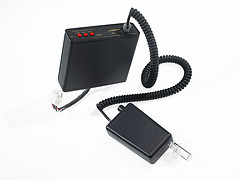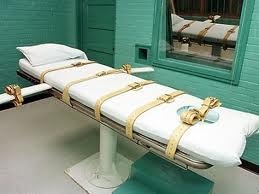 According to a recent report by WXII12.com, the leader of the Almighty Latin Kings and Queens Nation, Jorge Cornell, has been indicted on federal racketeering charges. Cornell has been in the public eye since he decided to run for Greensboro City Council twice and lost on both attempts. The indictment was handed down at the end of November, but for the safety of witnesses and victims as well as preservation of the prosecution’s case, the indictment was placed under seal.
According to a recent report by WXII12.com, the leader of the Almighty Latin Kings and Queens Nation, Jorge Cornell, has been indicted on federal racketeering charges. Cornell has been in the public eye since he decided to run for Greensboro City Council twice and lost on both attempts. The indictment was handed down at the end of November, but for the safety of witnesses and victims as well as preservation of the prosecution’s case, the indictment was placed under seal.
On Tuesday, December 6, 2011, a federal judge unsealed the indictment and a warrant was issued for Cornell’s arrest. Cornell and several others have been charged with conspiracy to commit several murders, as well as assaults, kidnappings, robberies, and arsons. Specifically, the indictment charges that Cornell ordered other Latin Kings and Queens Nation members to use machetes on members of the group who defied Cornell’s orders.
The indictment also charges that Cornell “orchestrated a public relations campaign” that masked the criminal tendencies of the Almighty Latin Kings and Queens Nation. Specifically, Cornell is said to have described the gang as a public service organization rather than calling it what is really is, a violent criminal gang. If convicted, Cornell and his compatriots all face possible life sentences in federal prison.
Cornell is charged with racketeering under the federal Racketeer Influenced and Corrupt Organization (RICO) Act, under Title 18 of the United States Code. 18 U.S.C. § 1961(1) defines “racketeering activity” as “any act or threat involving murder, kidnapping, gambling, arson, robbery, bribery, extortion, dealing in obscene material, or dealing in a controlled substance or listed chemical…”
Racketeering is essentially a pattern of illegal activity performed by an organization, which is designed to perpetuate that criminal organization. The federal government has used RICO to target violent street gangs as a collective rather than having to settle for going after individual members. Given the gangs’ culture of silence, bringing down the entire organization by targeting individuals was difficult. Members of many gangs are reluctant to reveal information about the inner workings of their organization for fear of retaliation.
 Charlotte Criminal Lawyer Blog
Charlotte Criminal Lawyer Blog










 What has happened over the last week at Penn State University has tarnished the lengthy career of a football coaching legend and the reputation of a nationally recognized institution. Wednesday evening Joe Paterno, 84 year-old football coach of Penn State University, was asked to step down immediately, ending his 46-year tenure as head coach.
What has happened over the last week at Penn State University has tarnished the lengthy career of a football coaching legend and the reputation of a nationally recognized institution. Wednesday evening Joe Paterno, 84 year-old football coach of Penn State University, was asked to step down immediately, ending his 46-year tenure as head coach. After a two-year legal battle and nine hours of jury deliberation, Doctor Conrad Murray was found guilty of involuntary manslaughter in the death of pop star, Michael Jackson, at the downtown Los Angeles County Courthouse. Murray served as Jackson’s personal physician as he vigorously prepared for his comeback concert. During this time, Jackson was known to have had trouble sleeping and according to his testimony to remedy this Murray was administering the surgical anesthetic propofol every night for at least two months. The Los Angeles County coroner confirmed that Jackson’s death was caused by “acute propofol intoxication” in combination with two other sedatives.
After a two-year legal battle and nine hours of jury deliberation, Doctor Conrad Murray was found guilty of involuntary manslaughter in the death of pop star, Michael Jackson, at the downtown Los Angeles County Courthouse. Murray served as Jackson’s personal physician as he vigorously prepared for his comeback concert. During this time, Jackson was known to have had trouble sleeping and according to his testimony to remedy this Murray was administering the surgical anesthetic propofol every night for at least two months. The Los Angeles County coroner confirmed that Jackson’s death was caused by “acute propofol intoxication” in combination with two other sedatives. Since the passage of North Carolina’s Laura’s Law in June by Governor Beverly Perdue, the courts have been tougher on drunk driving especially Hard Core Drunk Drivers (HCDD). The law is named for a North Carolina teenager who was killed by a drunk driver who had three prior DWI (Driving While Impaired) on his record. In the past, excessive offenders would be given an interlock device on their car which would force them to blow into a device before operating their vehicle. Research has found that with these interlock ignition devices, many of the offenders get a “blow fail” which means that at the time they were too drunk to operate the vehicle but still attempted to do it. The interlock ignition device is used for HCDD which are those offenders who are found to blow over a .15 BAC (.08 is the legal limit in NC).
Since the passage of North Carolina’s Laura’s Law in June by Governor Beverly Perdue, the courts have been tougher on drunk driving especially Hard Core Drunk Drivers (HCDD). The law is named for a North Carolina teenager who was killed by a drunk driver who had three prior DWI (Driving While Impaired) on his record. In the past, excessive offenders would be given an interlock device on their car which would force them to blow into a device before operating their vehicle. Research has found that with these interlock ignition devices, many of the offenders get a “blow fail” which means that at the time they were too drunk to operate the vehicle but still attempted to do it. The interlock ignition device is used for HCDD which are those offenders who are found to blow over a .15 BAC (.08 is the legal limit in NC). Citing sixteen separate reasons for his case to be overturned, attorneys for Demeatrius Montgomery have filed an appeal almost one year after he was convicted for killing two CMPD officers at the Timber Ridge Apartments in 2007. In an interview with Charlotte News Channel 14 on September 27, 2011,
Citing sixteen separate reasons for his case to be overturned, attorneys for Demeatrius Montgomery have filed an appeal almost one year after he was convicted for killing two CMPD officers at the Timber Ridge Apartments in 2007. In an interview with Charlotte News Channel 14 on September 27, 2011,  In a recent interview with WSOC channel 9 news interview,
In a recent interview with WSOC channel 9 news interview,  Defending your
Defending your  If you see blue lights come on behind your vehicle and it’s after midnight on about any day of the week, chances are the Officer stopping your vehicle is going to ask you if you have consumed any alcohol that evening. If he smells even the faintest odor of alcohol a Driving While Impaired investigation is almost certainly to follow. Hopefully after performing some routine field sobriety tests you will be allowed to get back in your vehicle and drive away, however, you may find yourself being placed in handcuffs and arrested.
If you see blue lights come on behind your vehicle and it’s after midnight on about any day of the week, chances are the Officer stopping your vehicle is going to ask you if you have consumed any alcohol that evening. If he smells even the faintest odor of alcohol a Driving While Impaired investigation is almost certainly to follow. Hopefully after performing some routine field sobriety tests you will be allowed to get back in your vehicle and drive away, however, you may find yourself being placed in handcuffs and arrested. In a Catawba County home, deputies found a liquor still, 100 jars of “white lightning” moonshine, 40 firearms, 195 grams of marijuana, prescription drugs, and more than $13,000 in cash. The resident, Mr. Timothy Scott Fox, has been charged with possession with intent to sell and deliver marijuana, maintaining a dwelling for a controlled substance, possession and sale of non-tax paid alcohol, possession and sale of alcohol without a permit, and manufacturing liquor without a permit. Mr. Fox is now out on $15,000 bond.
In a Catawba County home, deputies found a liquor still, 100 jars of “white lightning” moonshine, 40 firearms, 195 grams of marijuana, prescription drugs, and more than $13,000 in cash. The resident, Mr. Timothy Scott Fox, has been charged with possession with intent to sell and deliver marijuana, maintaining a dwelling for a controlled substance, possession and sale of non-tax paid alcohol, possession and sale of alcohol without a permit, and manufacturing liquor without a permit. Mr. Fox is now out on $15,000 bond. On August 19, 2011, Damien Echols, Jessie Misskeley, Jr. and Jason Baldwin changed their original 1993 not guilty pleas and a judge found that based on these new pleas, they have served their time, and they will be released but have a ten-year suspended sentence hanging over them once they are released. This legal maneuver, called an Alford Plea, allows these men to maintain their assertion that they are innocent but acknowledges that the state does have some evidence against them that could be the basis of a conviction.
On August 19, 2011, Damien Echols, Jessie Misskeley, Jr. and Jason Baldwin changed their original 1993 not guilty pleas and a judge found that based on these new pleas, they have served their time, and they will be released but have a ten-year suspended sentence hanging over them once they are released. This legal maneuver, called an Alford Plea, allows these men to maintain their assertion that they are innocent but acknowledges that the state does have some evidence against them that could be the basis of a conviction.